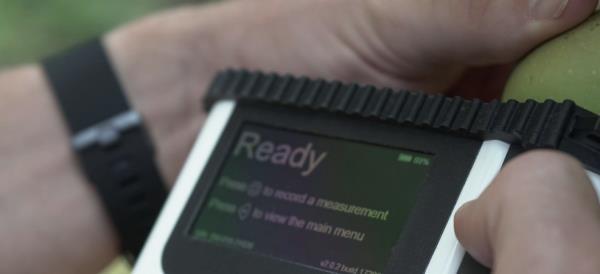SWNIR spectrophotometry and machine learning for accurate lycopene assessment in tomatoes
United States
Thursday 20 June 2024
To enhance the practical application of scientific models in predicting fruit quality, researchers have successfully used short-wave near-infrared (SWNIR) spectrophotometers to classify tomatoes by their lycopene content. Leveraging open-source tools, including hardware ranging from 410 to 940 nanometers and software on the R platform, they discovered that certain wavelengths had specific correlations with lycopene levels: negative correlations at 485, 560, and 585 nm, and a positive correlation at 760 nm. (photo: felixinstruments.com)
To enhance the practical application of scientific models in predicting fruit quality, researchers have successfully used short-wave near-infrared (SWNIR) spectrophotometers to classify tomatoes by their lycopene content. Leveraging open-source tools, including hardware ranging from 410 to 940 nanometers and software on the R platform, they discovered that certain wavelengths had specific correlations with lycopene levels: negative correlations at 485, 560, and 585 nm, and a positive correlation at 760 nm.
For building the prediction model, they selected 14 specific wavelengths based on variance analysis. They employed various machine-learning techniques, such as Linear Discriminant Analysis (LDA), Artificial Neural Networks (ANN), Random Forest (RF), Support Vector Machine (SVM), and logistic regression. These models were refined and tested using an 80-20% train-test data split, enhancing their reliability.
Among these, the ANN models stood out with an impressive 95% accuracy rate, significantly higher than the logistic regression RF models at 80%, and both LDA and SVM models at 90% accuracy.
The video presentation on this research provides further insights into their findings.
The F-750 Produce Quality Meter, developed by Felix Instruments, is a short-wave near-infrared (SWNIR) spectrophotometer that offers a swift and non-invasive method for measuring essential quality attributes of produce. This tool accurately gauges maturity indicators like dry matter content and °Brix levels, aiding in the determination of the best harvesting times. Additionally, it evaluates key quality metrics, including dry matter, °Brix, and titratable acidity, in incoming produce lots and monitors these parameters in cold storage and ripening facilities.
Send an email to arrange a live demonstration with one of Felix Instruments' application scientists. This session will provide an overview of the instrument's capabilities, demonstrate its use in your particular application, and offer real-time answers to your questions.





